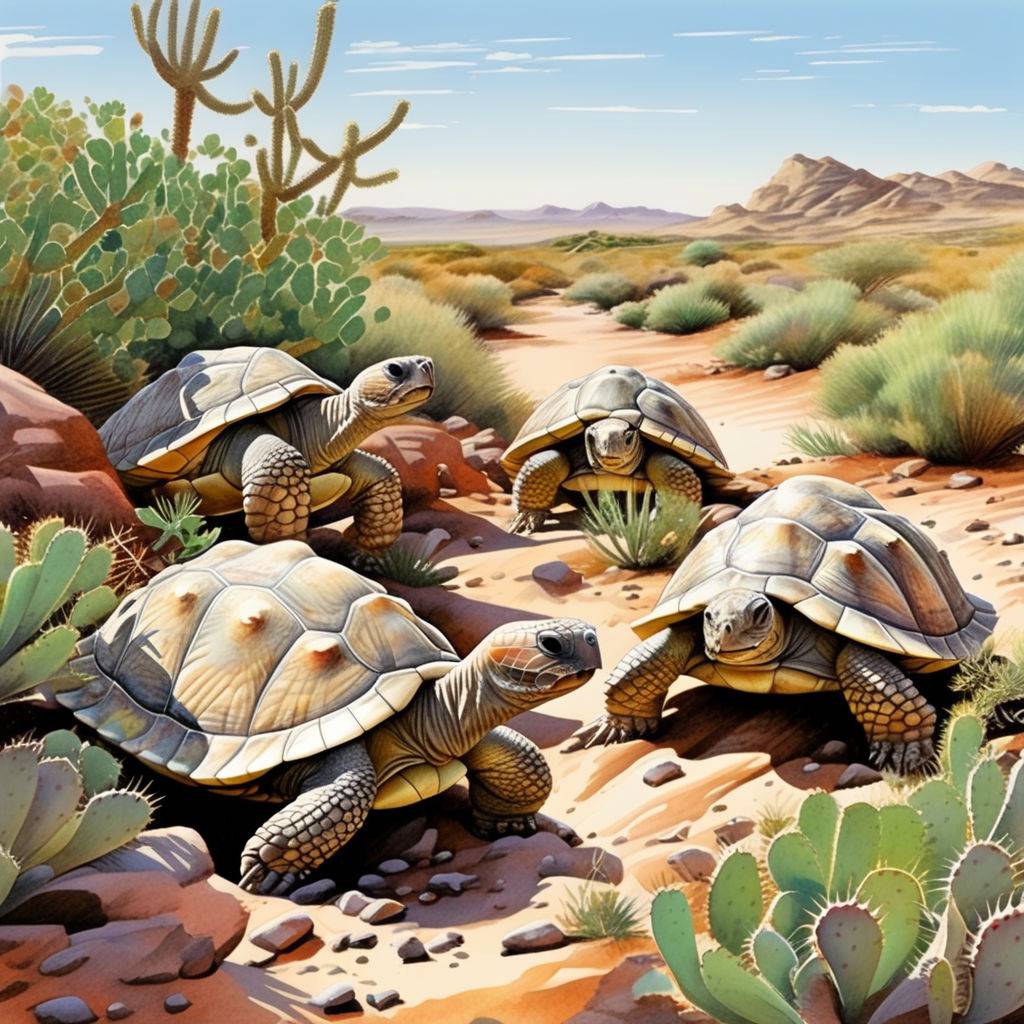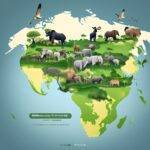In a promising development for wildlife conservation, 70 critically endangered Mojave desert tortoises have successfully emerged from their winter burrows after being reintroduced into their native habitat. The initiative, led by the San Diego Zoo Wildlife Alliance in collaboration with several partners, marks a significant step towards bolstering the population of this imperiled species.
Thriving in Native Environment
Following their release, the tortoises wasted no time in adapting to their surroundings. Wildlife experts observed that the tortoises swiftly constructed or modified burrows to serve as shelters during the winter, demonstrating their resilience and adaptability. After undergoing a period of brumation—a reptilian equivalent of hibernation—the tortoises emerged six months later, indicating their successful acclimatization to the wild.
Comprehensive Rearing Process
Prior to their release, the tortoises underwent a meticulous rearing process aimed at enhancing their survival prospects. This involved a combination of indoor and outdoor rearing, with the cohort of hatchlings initially cared for indoors at The Living Desert Zoo and Gardens in Palm Desert. Subsequently, they were transitioned to a protected outdoor environment at Edwards Air Force Base, where they continued their development under close supervision.
Overcoming Predation Challenges
While the reintroduction effort has shown promising results, it has not been without challenges. A second cohort of young tortoises faced threats from predatory ants and fly larvae during their time at Edwards Air Force Base. Despite these obstacles, surviving hatchlings received ongoing care and support, underscoring the commitment to ensuring their well-being.
Climate Impact and Conservation Strategies
The successful reintroduction of Mojave desert tortoises highlights the intricate relationship between wildlife conservation and climate change. Experts emphasize the importance of addressing the impacts of climate change on habitat suitability and predator-prey dynamics, particularly for endangered species like the Mojave desert tortoise.
Collaborative Conservation Efforts
The reintroduction initiative represents a collaborative effort involving multiple stakeholders, including The Living Desert Zoo and Gardens, Edwards Air Force Base, the U.S. Fish and Wildlife Service, and the U.S. Geological Survey. By pooling resources and expertise, these organizations have made significant strides in safeguarding the future of the Mojave desert tortoise population.
Ensuring Long-Term Survival
As the young tortoises continue to acclimate to their native habitat, ongoing monitoring and conservation efforts will be crucial in ensuring their long-term survival. By providing a conducive environment free from the threats of predation and habitat degradation, stakeholders aim to secure a brighter future for these iconic desert dwellers.
For more news on wildlife conservation and environmental initiatives, download The Local News App to your phone today.









Leave a Reply